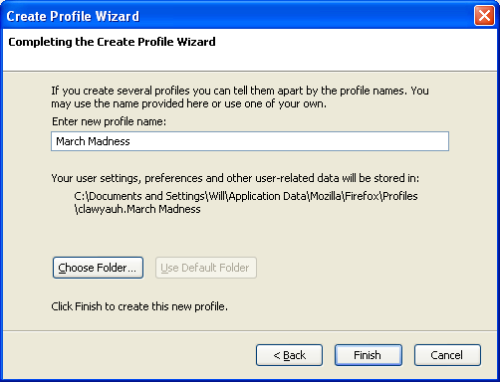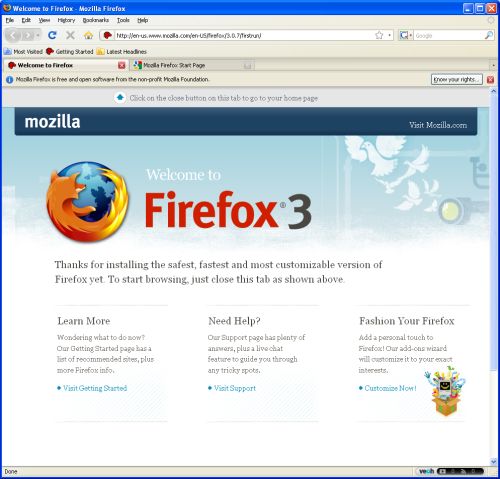
After an incredible 752% growth in 2008, Twitter jumped 33% in February to reach over 8 million people.
CEO Evan Williams has been profiled in the New York Times, interviewed by Charlie Rose, and invited to the White House by Barack Obama.
I decided to write a post that looks beyond the hype and explains why Twitter matters and what it may grow up to be.
Twitter is the Real-Time Web
Despite Twitter’s impressive growth, it’s traffic is still dwarfed by that of Google and Facebook. So what’s the big deal?

I believe Twitter will be the backbone of the real-time web.
Google organizes and finds documents and media files that are stored online. Facebook helps you feel more connected to and share your life with your friends. Twitter has tapped into a new source of data, one that never before existed on the internet: sincere opinions from real individuals.
I will make several arguments and comparisons to illustrate why this is valuable.
Twitter’s First Killer Application: Real-Time Search
Over the last several months, nearly every major news event – from earthquakes to the Mumbai attacks to plane crashes – Twitter was first to report what was going on, by people involved.
On March 10th, 10 people were killed by a shooter in Alabama. I learned about this tragedy from a tweet by @MCHammer. Immediately I jumped onto google and searched for “alabama shooting.” Below is the results page:

Twitter vs Google Results: Alabama Shooting
[Note: Using a Greasemonkey Script that mashes up Twitter search results on a Google page, I can see both real-time search results and Google search results.]
Take a look at the screenshot. Each of the Twitter results are accurate, real-time, and personal. Excluding the first Google result, the other links are either inaccurate (reporting an incorrect number of fatalities) or inappropriate (it’s arguably poor form to link to an Alabama shooting range during a tragedy).
But Google Doesn’t Want Real-Time Search, Right?
In recent weeks, Google has been outwardly critical of Twitter. First, CEO Eric Schmidt called Twitter a “poor man’s email system” and dismissed the notion of buying Twitter. Soon after, Google executive Brian Bershad indicated that Google does not want real-time search because “There’s relatively little data in Twitter.”
So Google does not want to be Twitter nor buy Twitter. Fine. But not wanting real-time search? I think that is just posturing. Let’s take a look at more examples of where real-time search beats Google results.
Example: “tech jobs” – would you rather have links to real job postings and insights (Twitter) or links to sites you already know about (Google)?

"tech jobs": Twitter on top, Google on bottom
Example: “tim armstrong” soon after the announcement that he is leaving Google. Twitter shows commentary about the real-time news. Google gives a link to Tim’s old corporate bio page on google.com.

"tim armstrong" search: Twitter on top, Google on bottom
Facebook Understands the Potential of Twitter
Even though Google is still in denial, Facebook knows that Twitter has tapped into the real-time web in an innovative and valuable way.
Facebook’s attempt to acquire Twitter for $500 million failed, but they did launch a response to Twitter in the form of a new homepage that gives users a real-time feed of status updates and published content from their friends.
Well Facebook, imitation is the biggest form of flattery. Smart decision though.
With Twitter and Facebook (and FriendFeed) now battling over the same turf of real-time updates, who will win?
Facebook has a strong advantage in that the network already exists (over 175 million users). However, what about connecting with people who are not my friends?
Twitter lets me follow anybody and anyone can follow my updates. Ad hoc social networks are created by simply using a hashtag to specify a topic (like #sxsw for the South by Southwest festival).
It is not clear that Twitter can win against Facebook, but momentum and hype will help Twitter continue to grow its own network and be a strong contender.
Twitter’s Monetization Strategy
Twitter has a lot of hype, so where is the revenue model? Well, there isn’t one yet, they admit, but they have raised $55 million in venture capital to find one. And in recent months, several possible business models have started materializing.
Search advertising – Taking a page from Google’s highly successful AdWords business, Twitter could build out a performance-based advertising platform that integrates with its real-time search capabilities.
Paid placement – Jason Calacanis offered to pay $250,000 for one of the top 20 Twitter accounts recommended to new users, commenting “I believe that in five years the top 20 recommend slots will be worth $1m a year each-super bowl commercial level in fact.” Companies like Whole Foods and Zappos have built strong presences on Twitter and many firms like these would be willing to pay for premium placement.
Selling Virtual Goods – In a recent post, Benchmark Capital Partner Bill Gurley wrote a fantastic piece on how MySpace and Facebook should monetize: sell stuff online. Twitter could build a marketplace for virtual goods and casual games that directly leverages its social connecting capabilities.
Final Thoughts
This is probably my longest post to date. I have been actively participating in the Twitter community for some time now, and have watched the hype and innovation unfold. The source of innovation is clear to me now: Twitter has built a new form of communication that encourages activity like never before.
By limiting tweets to 140 characters, users are willing to write quick responses to direct requests.
By allowing any user to follow another user’s updates, Twitter has traversed the limits of friendship circles and introduced a new channel for personal and corporate brand marketing.
By opening up its API to a multitude of other players, Twitter has become ubiquitous to all platforms, PC and mobile, encouraging intimate, personal tweets.
I believe the best comparison for Twitter is the invention of the telephone, on top of which industries and fortunes have been built. There is no guarantee for success, but the possibility for a new platform technology on which new industries will be built is the strongest since the advent of the Internet.


























 I was asked to present to a group of entrepreneurs about using SEO and Social Media to build buzz for an early stage internet startup. I am uploading the presentation as the first of a series I am calling
I was asked to present to a group of entrepreneurs about using SEO and Social Media to build buzz for an early stage internet startup. I am uploading the presentation as the first of a series I am calling 
